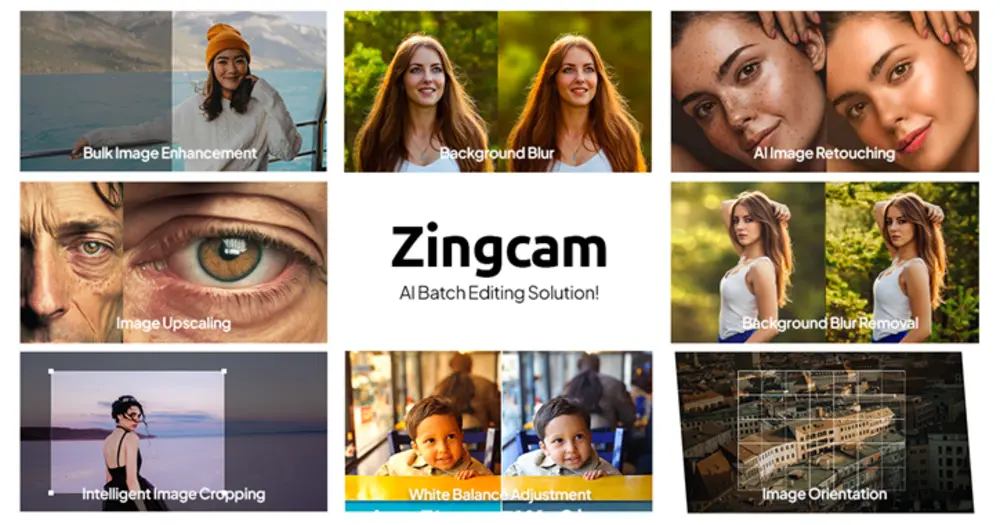Beyond Filters: AI & Transformative Image Editing
Introduction:
In the digital age, image editing has become an integral part of our visual culture. From enhancing personal photos to creating captivating content for social media, individuals and businesses alike rely on image editing tools to bring their visions to life. While traditional filters have been a staple in the world of photo editing, recent advancements in Artificial Intelligence (AI) have ushered in a new era of transformative image editing. This article explores the evolution of image editing beyond filters and delves into the powerful impact of AI on reshaping the way we edit and perceive visuals.
The Rise of Filters:
Filters, once limited to simple adjustments like brightness, contrast, and color saturation, quickly gained popularity with the rise of social media platforms like Instagram. These pre-packaged effects allowed users to effortlessly enhance their photos, creating a consistent and stylized look. However, as technology progressed, the demand for more sophisticated and personalized editing solutions grew.
Enter Artificial Intelligence:
AI has emerged as a game-changer in the realm of image editing, offering capabilities that go far beyond the static adjustments of traditional filters. Machine learning algorithms enable AI-powered tools to understand the content of an image, identify objects, and make intelligent decisions about how to enhance or modify them. This opens up a world of possibilities for users seeking more nuanced and personalized edits.
Key AI-Powered Image Editing Features:
- Content-Aware Editing:
AI algorithms can analyze the content of an image and make context-aware decisions. This includes automatically recognizing and adjusting elements such as faces, landscapes, and objects. Content-aware editing ensures that enhancements are applied in a way that complements the overall composition of the image.
- Style Transfer:
AI allows users to apply the artistic style of one image to another, resulting in visually striking compositions. Style transfer algorithms analyze the unique characteristics of different art styles and seamlessly apply them to photos, creating stunning visual hybrids.
- Object Removal and Addition:
Advanced AI image editing tools can intelligently remove unwanted objects from photos or even add new elements. This feature is particularly useful for cleaning up backgrounds, eliminating distractions, or enhancing the overall narrative of an image.
- Facial Recognition and Editing:
AI excels in facial recognition, enabling precise adjustments to individual facial features. Users can retouch portraits, enhance expressions, or even age and de-age subjects realistically, offering a level of detail and control that goes beyond traditional retouching tools.
- Automated Color Grading:
AI can analyze the color palette of an image and automatically apply professional-grade color grading. This feature is especially beneficial for photographers and content creators seeking a consistent and polished look across their work.
- Unleashing Creativity:
One of the most transformative aspects of AI in image editing is its ability to unleash creativity by automating repetitive tasks. By delegating mundane editing processes to AI, artists and photographers can focus more on the conceptual and artistic aspects of their work. This shift allows for greater experimentation and exploration, fostering a dynamic and ever-evolving landscape of visual expression.
- Predictive Editing and User Preferences:
The integration of AI brings forth the exciting potential for predictive editing based on user preferences. As AI systems learn from a user’s editing history and style choices, they can anticipate the desired adjustments, streamlining the editing process. This not only saves time but also encourages users to push their creative boundaries by suggesting enhancements they might not have considered.
- Real-Time Collaboration and Remote Editing:
AI-powered image editing opens up possibilities for real-time collaboration, making it easier for teams to work together on visual projects remotely. With the ability to analyze and understand the content of images, AI can assist in collaborative editing sessions, offering suggestions and automating certain tasks to enhance workflow efficiency.
- Integration with Creative Technologies:
The future of transformative image editing lies in seamless integration with other creative technologies. Imagine AI-powered tools working in tandem with virtual reality (VR) or augmented reality (AR), providing immersive editing experiences. This integration could revolutionize how artists and creators interact with their work, offering new dimensions of engagement and expression.
Zingcam by Flam – The all-encompassing AI Batch Editing Solution!
Zingcam, developed by Flam, stands out as a comprehensive AI-driven platform for Batch Photo Editing and Management. Tailored to alleviate the burdens faced by photographers, it boasts a rich array of features. This platform is specifically crafted for the contemporary photographer dealing with a substantial volume of photos.
In regard to features, Zingcam aids Photographers with:
- Crop (Automated & Manual)
- White Balance Adjustment
- Advanced Culling
- Background Blur
- Background Removal
- Spots Removal (Manual & Automated)
- Image Upscale
- Image Resizing
Tailored for businesses, Zingcam offers an additional solution: API Integration. Recognizing the needs of businesses with established platforms and workflows, Flam goes the extra mile by providing advanced image solutions through API endpoints. This enables clients to seamlessly integrate Zingcam’s AI capabilities into their existing systems, streamlining photo management processes without the need for a complete system overhaul. Clients can choose from a diverse range of solutions or selectively adopt specific features, gaining dedicated API endpoints to efficiently incorporate these robust capabilities into their platform.
Conclusion:
The era of transformative image editing powered by AI has arrived, offering users unprecedented control and creativity in enhancing their visual content. Beyond traditional filters, AI enables content creators to push the boundaries of imagination, bringing their unique visions to life in ways previously unimaginable.
As technology continues to advance, the marriage of AI and image editing is set to redefine the standards of visual storytelling and creativity, making the journey of image enhancement an exciting and limitless exploration. The integration of AI not only enhances the technical aspects of image editing but also empowers creators to explore new realms of artistic expression and collaboration, paving the way for a future where the only limit is the extent of our collective imagination.




